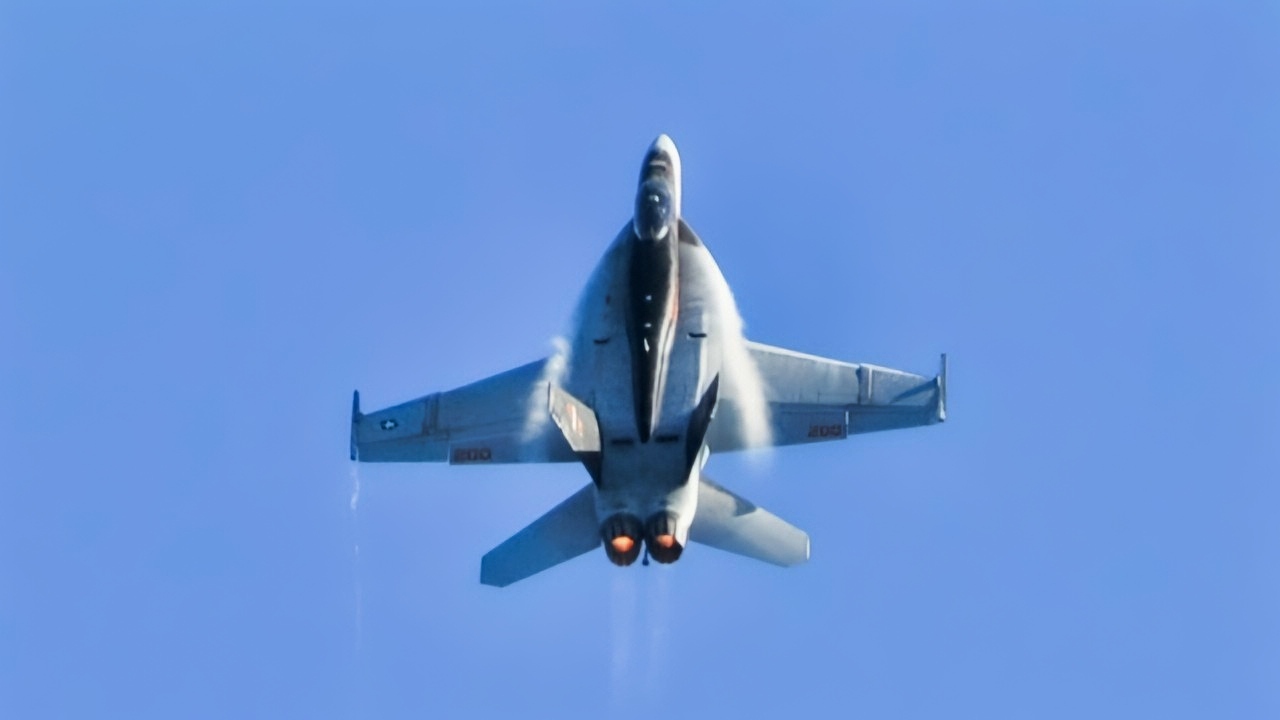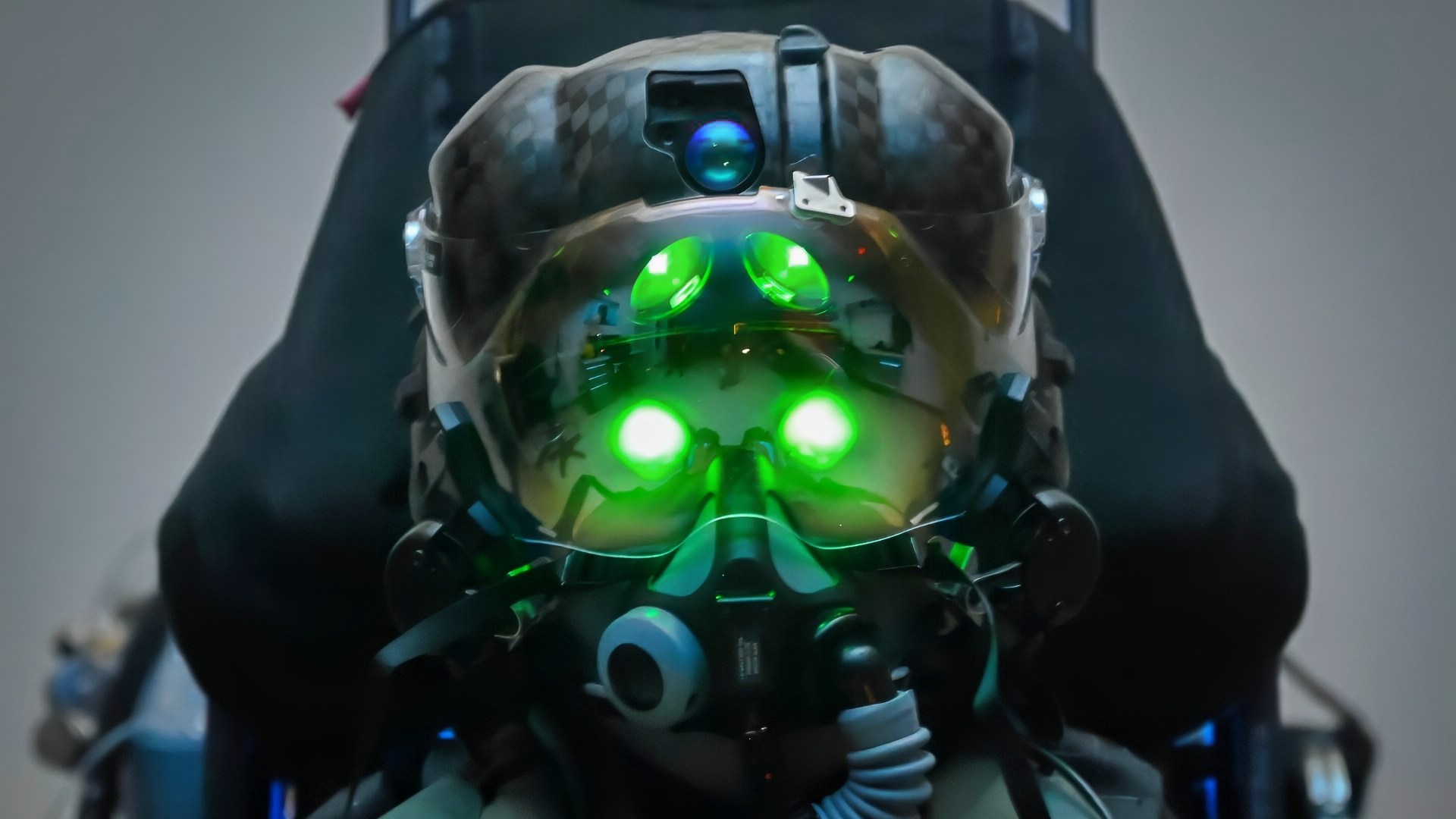Key Points and Summary – A civilian-owned Hawker Hunter fighter jet, acting as a “red air” adversary for the U.S. Navy, crashed into the Pacific off Big Sur, California, this week.
-The pilot, working for the contractor ATAC, safely ejected after a suspected engine failure and was rescued uninjured.

Maj. Kristin Wolfe, F-35A Lightning II Demonstration Team pilot and commander, flies an F-35 assigned to the 421st Fighter Generation Squadron at the Wings Over Houston Airshow, Texas, Oct. 15, 2023. The airshow showcases vintage World War II aircraft alongside modern aviation and has supported a variety of local and national charities during its 39-year history. (U.S. Air Force photo by Staff Sgt. Kaitlyn Ergish)
-The incident highlights the role of private companies in military training and the inherent dangers of aviation.
-The successful rescue also provides a window into the dramatic, life-saving, and often injurious process of ejecting from a military aircraft, a last-ditch option when all other attempts to save the plane have failed.
A ‘Red Air’ Fighter Jet Just Crashed Off the Coast of California
It’s not every day that a British fighter jet crashes off the coast of California, especially not with the pilot surviving. But just such an accident happened this week.
According to local TV station KSBW, a Hawker Hunter fighter jet crashed into the Pacific Ocean on Wednesday, about 5 miles off Big Sur. The plane, per that report, is owned by Hunter Aviation International Inc.
The pilot appeared to eject from the aircraft and was pulled from the water by a U.S. Navy rescue helicopter out of Lemoore Naval Air Station. After he was sent to Stanford Medical Center, the pilot was “uninjured and has been released from the hospital.”

A U.S. Navy F/A-18E Super Hornet aircraft assigned to Strike Fighter Squadron (VFA) 147 performs maneuvers above the aircraft carrier USS Nimitz (CVN 68) during the departure of Carrier Air Wing (CVW) 11 Dec. 10, 2013, in the Pacific Ocean. CVW-11 fixed wing aircraft flew off the Nimitz to return home after being deployed to the U.S. 5th, 6th and 7th Fleet areas of responsibility. (U.S. Navy photo by Mass Communication Specialist Seaman Apprentice Kelly M. Agee/Released)
The Aviationist had more details on the crash. Its report stated that the plane was owned by the civilian contractor ATAC (Airborne Tactical Advantage Company) and was operating under the callsign ATAC 11, even though the jet itself was callsigned ATAC 12.
A source close to the situation said “the Hunter jet suffered from what is thought to have been an engine issue or failure.” The pilot attempted to reach Monterey Regional Airport but eventually realized it was a better bet to abandon the aircraft and eject.
And what was the aircraft doing?
Per The Aviationist, “The two Hunters were operating as ‘red air’ for F/A-18 Hornets flying from Naval Air Station Lemoore in the W283 and W285 military training areas off the coast.”
What ATAC Does
According to The Aviationist, ATAC operates a fleet of Hawker Hunter jets, which are “utilized regularly as part of their contracted provision to military and government customers, including the U.S. military.”
A social media user called Aeroscout was able to post radar of the jet’s pattern during the incident.
Citing that account, The Aviationist reported, “After ATAC 12 went down, ATAC 11 circled the crash site and made air traffic control aware of the incident by relaying messages through nearby civilian aircraft. An MH-60S Seahawk search and rescue (SAR) helicopter was soon scrambled from Naval Air Station Lemoore, which maintains a permanent station SAR flight for such occasions.”
The MH-60 pulled the pilot from the water. While early reports stated the pilot had suffered a “serious spinal injury,” The Aviationist reported that further information indicates the pilot is safe.
Not the First Time
The skies off the coast of California are often crowded. And while crashes are not common, The Aviationist, citing data from the Aviation Safety Network, pointed out that there have been at least nine other incidents involving a Hawker Hunter, including four that involved “the total loss of an airframe,” and two cases in which the crash was fatal.
The Aviationist noted that “The ejection experience is far more taxing on the human body compared to current generation seats with modern technology and materials.”
July and August Ejections
In July, an F-35 fighter jet went down in California, although the pilot safely ejected.
That jet was associated with the VFA-125 “Rough Raiders,” based at Naval Air Station Lemoore in Southern California. The jet crashed onto land and burst into flames, per the report.
“We can confirm the pilot successfully ejected and is safe. There are no additional affected personnel,” NAS Lemoore said on its Facebook page at the time.
Back in August, the Navy said that an F/A-18E Super Hornet pilot had been safely recovered after ejecting off the coast of Virginia.
That pilot, part of Strike Fighter Squadron (VFA) 83, ejected from the Super Hornet during a routine training flight.
“Multiple search and rescue assets were deployed and quickly arrived on scene,” the Navy stated. “The pilot was rescued at approximately 11:21 a.m. EDT and was transported to a local hospital for further medical evaluation. The F/A-18E remains in the water where it crashed.” An investigation into the “mishap,” the Navy said, was ongoing.
Per WTKR, the pilot ejected and was released from the hospital that same day.
How Pilots Eject
Aviation Geek Club this week offered a closer look at how pilot ejections work. The act can be dangerous and painful, but it saves lives.
“In most designs, the aircraft canopy comes off and the seat is propelled out of the aircraft by an explosive charge or rocket motor, carrying the pilot with it,” Aviation Geek Club wrote. “Once clear of the aircraft, the ejection seat deploys a parachute. In two-seat aircraft, the seats are ejected at different angles to avoid a collision.”
The story also quoted a U.S. Navy A-7E Corsair II pilot named David Tussy, who answered questions about ejecting on the social media site Quora.
“I remember a saying from my Navy flying days—‘If you have to eject, put your neck in the position you want it in for the rest of your life,’” Tussy said in the Quora chat.
“Oh…you mean the position of the aircraft, that is the aircraft’s condition—it has to be some condition which prevents normal control and continued flying of the aircraft,” he wrote. “Ejecting from a flying aircraft is an absolute last-ditch option. In fact, you’re very likely to be very seriously injured during an ejection, so you want to be sure that there is nothing else you can do to recover the aircraft.”
When to Eject
There are several circumstances, Tussy wrote, in which an ejection is necessary:
“Aircraft is uncontrollable below 10,000 feet; Aircraft has experienced a total electrical failure; Aircraft has experienced combat damage such that it is no longer controllable; Aircraft is on fire; Total engine failure below 10,000′ when that is the minimum altitude to attempt an inflight engine re-start.”
He also noted that while during his career he never heard of a pilot being criticized or suffering consequences for ejecting, he did have some friends who waited too long and therefore did not survive their crash.
“Loss of an aircraft is a serious issue, and there will undoubtedly be a Board of Inquiry to determine what happened,” he wrote. “But that is always preferred over a funeral.”
About the Author: Stephen Silver
Stephen Silver is an award-winning journalist, essayist, and film critic, and contributor to the Philadelphia Inquirer, the Jewish Telegraphic Agency, Broad Street Review, and Splice Today. The co-founder of the Philadelphia Film Critics Circle, Stephen lives in suburban Philadelphia with his wife and two sons. For over a decade, Stephen has authored thousands of articles that focus on politics, national security, technology, and the economy. Follow him on X (formerly Twitter) at @StephenSilver, and subscribe to his Substack newsletter.
More Military
The U.S. Air Force’s B-52 Bomber and F-35 Fighter Have A Message for Venezuela
Russia’s Mach 4.3 MiG-41 Stealth Fighter Has a Message for the U.S. Air Force
Forget the F-35: The MQ-25 Stingray Might Be the Navy’s Best ‘Weapon’ Against China
Forget the F-35 of F-47: The GCAP 6th Generation Stealth Fighter Is Coming
U.S. and 9 Allies Just Held a Big Naval Exercise Right on China’s Doorstep










